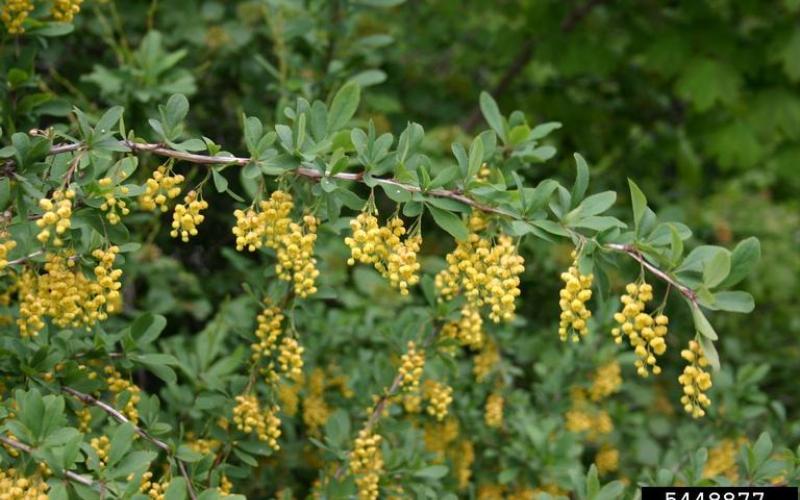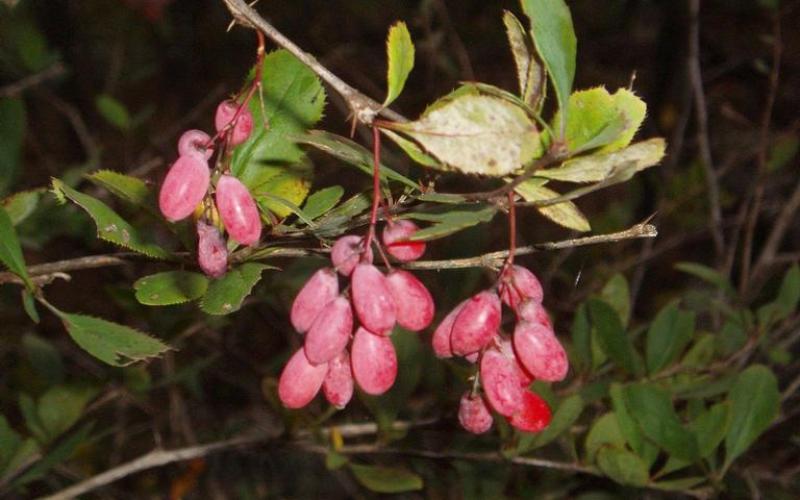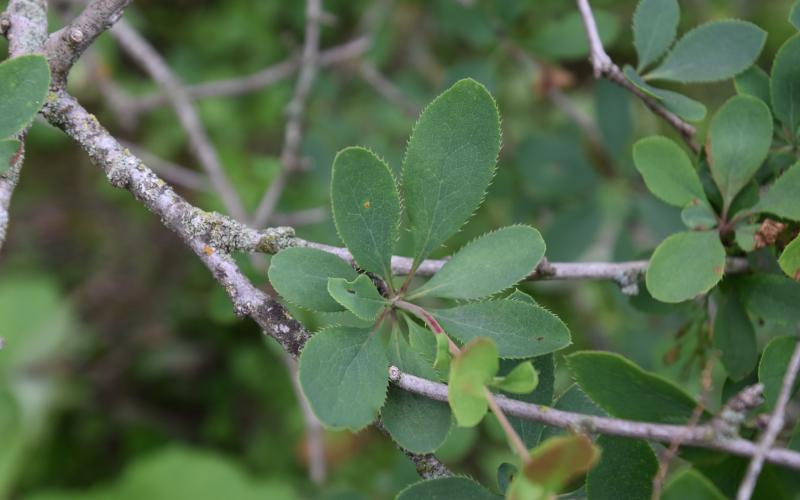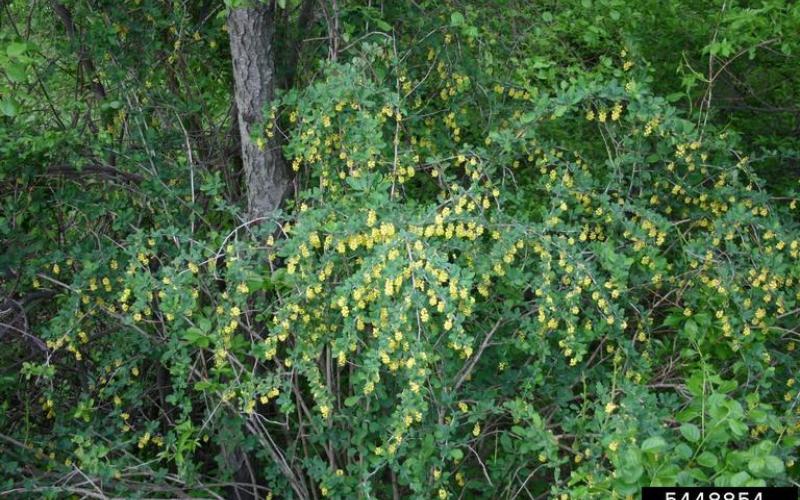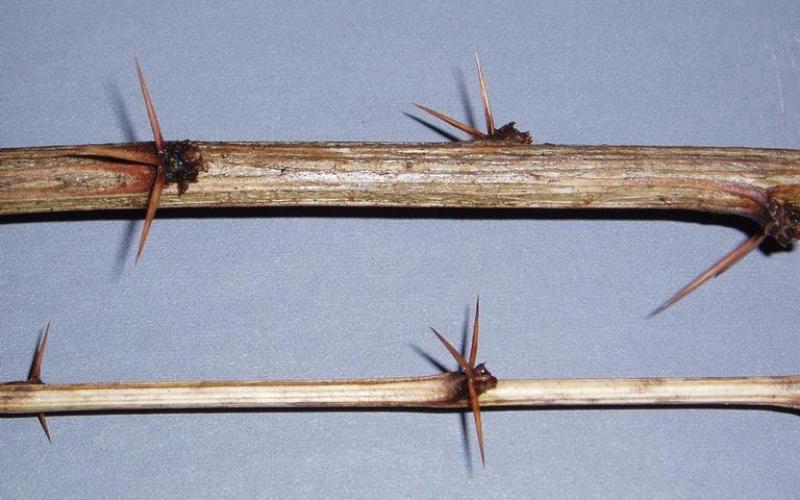Common Name: Common barberry
Scientific Name: Berberis vulgaris L.
Legal Status
Efforts must be made to prevent seed maturation and dispersal of plants into new areas. Additionally, no transportation, propagation, or sale of these plants is allowed. Failure to comply may result in enforcement action by the county or local municipality.
Background
Common barberry is native to Asia and has widely naturalized across Europe. It was first brought to North America in the 1600s by early New England settlers and escaped from cultivation. It is widely distributed throughout the northern U.S. states. It has been established in Minnesota since the early 1900s, and is most common in the southeastern part of the state. Common barberry is an alternate host of black stem rust that can cause severe yield losses (50-70%) of small grains. Historical losses were so severe that there was a federal and state eradication effort. Over 1 million barberry plants in Minnesota were destroyed from 1918 – 1990.
Description
- Common barberry is a deciduous shrub in the barberry family, measuring 8- 10 feet in height and 6 feet in width.
- The small, ovate, alternate, toothed leaves are clustered at nodes.
- The bark is gray and has sharp, double- or triple- branched spines along branches.
- Flowers are 1/2 inch long, pale yellow, borne on drooping racemes which hang from branches at leaf clusters. Bloom time is in May and June.
- Fruit are small, egg-shaped berries, red to purple in color. Each fruit contains 1- 3 small black seeds.
- Common barberry can easily be confused with Japanese barberry (Berberis thunbergii DC.). Common barberry is distinguished by its sharply toothed leaf margins and 3- pronged spines lining the branches. It also has taller, more loosely arranged branches than Japanese barberry.
Habitat
Common barberry will grow in dense and open woods, pastures, fencerows, roadsides, clearings, and waste spaces. It can grow in full sun to shade and all soil types.
Means of spread and distribution
Common barberry is a prolific seed producer, producing thousands of seeds per bush which are long-lived in the soil and have a high germination rate. Birds are attracted to the fleshy berries and disperse seeds to new areas. It also spreads vegetatively from rhizomes sending up new shoots and can sprout from small rhizome fragments.
Common barberry is most common in southeastern Minnesota.
Impact
Common barberry forms dense stands, outcompeting and replacing native species. It can reduce wildlife habitat and forage.
It is an alternate host of black stem rust (Puccinia graminis) and key to sexual reproduction enabling this fungus to produce new races. This stem rust is a fungal disease of concern for small grains like wheat, barley and oats. Currently, the threat to wheat production in Minnesota is reduced by the cultivation of rust resistant varieties of wheat. There is concern that new rust races could form on common barberry and cause yield losses in small grains.
Prevention and management
- Once established, common barberry is difficult to control. For all management options, infestation sites will need to be monitored for several years and treated repeatedly until the seedbanks are depleted.
- Plants growing near wheat or other small grain fields should be given priority for removal.
- Small infestations can be controlled manually by digging and removing the root system. All roots must be removed to prevent resprouting. Use gloves, long sleeves, and long pants to protect yourself from the spines.
- After initial removal, regular mowing or spraying of any seedlings or resprouts can be successful to maintain control.
- Large infestations can be controlled with either foliar or cut-stem herbicide applications. Treatments will need to be repeated for several years to eradicate a population. If using herbicide treatments, check with your local University of Minnesota Extension agent, co-op, or certified landscape care expert for assistance and recommendations. There are several businesses throughout the state with certified herbicide applicators that can be hired to perform chemical applications.

